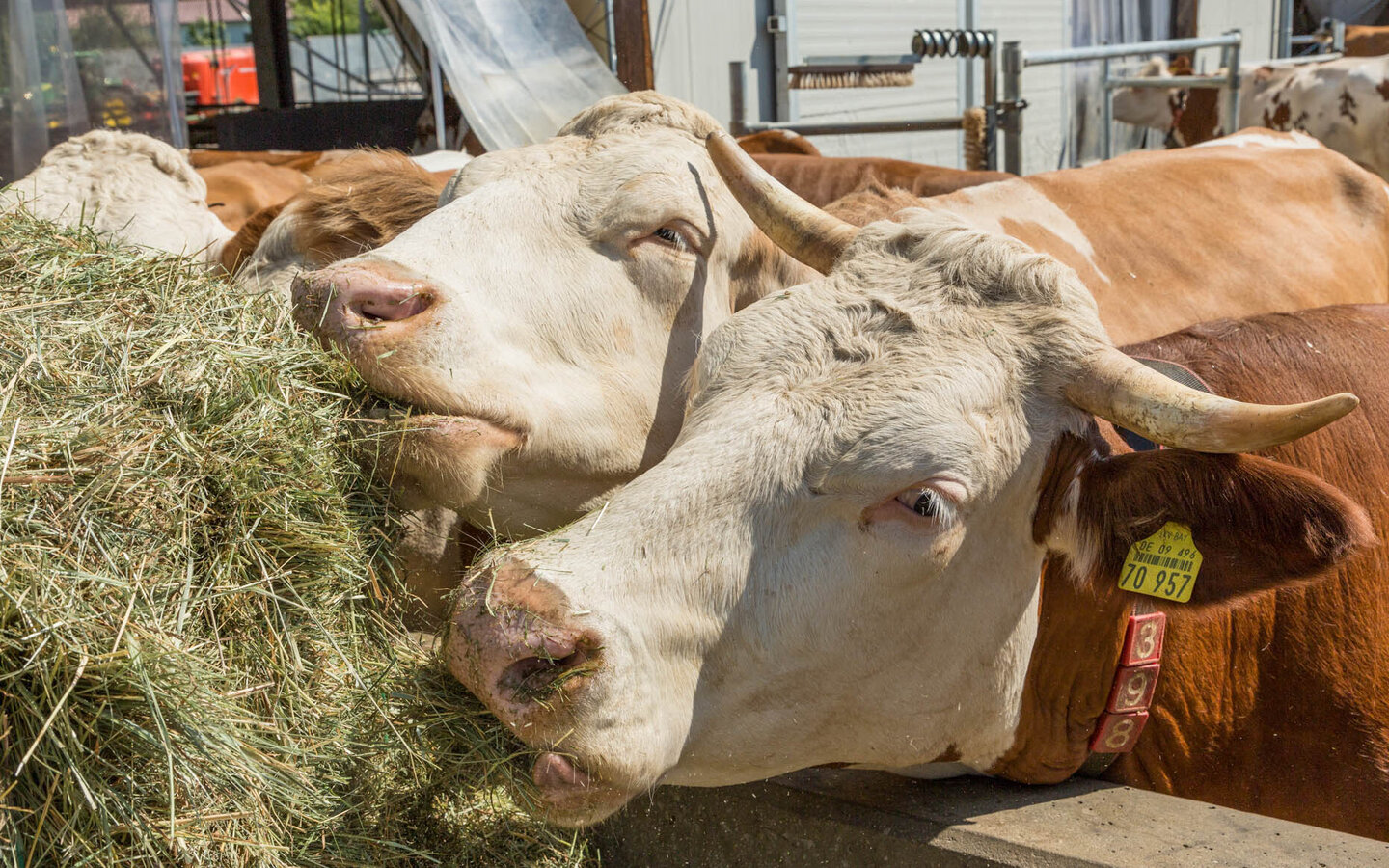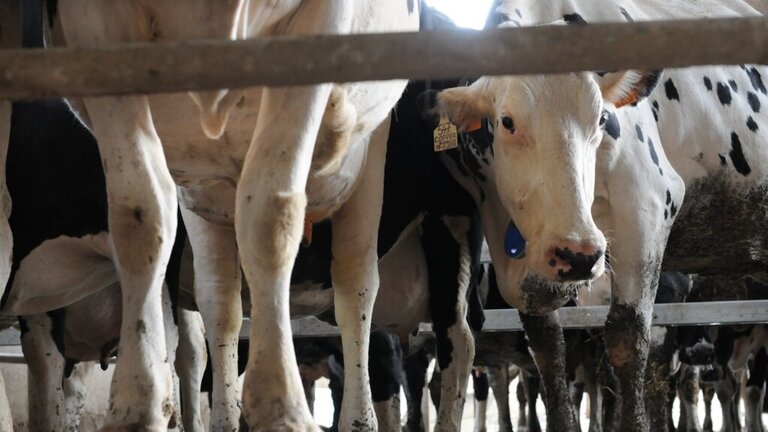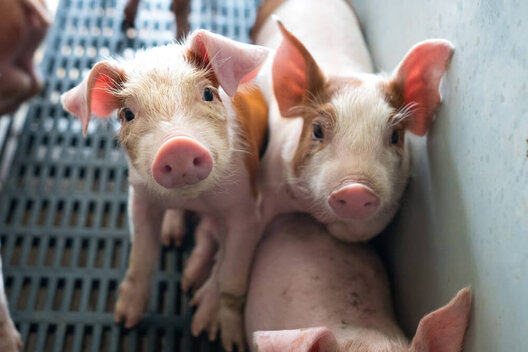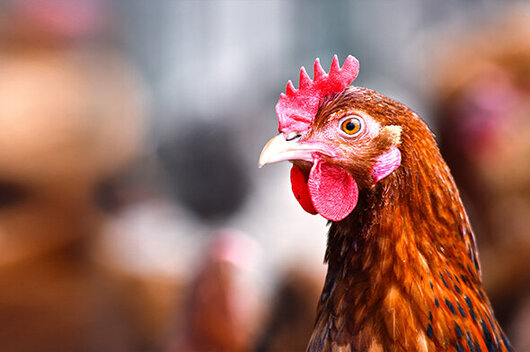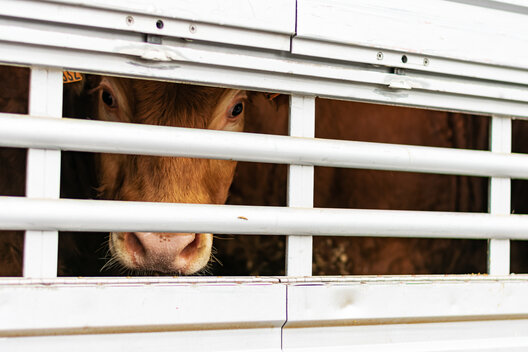When low prices come before animal welfareWhat you should look out for when buying milk
Milk packaging in supermarkets advertises with pictures of cows in lush green meadows. Bottles and cartons give the impression of animal welfare and idyllic surroundings. However, many mislead consumers who want to buy their milk with a clear conscience and without animal cruelty.
Cows should give milk and barely move
Most dairy cows never see or touch a single pasture in their entire lives. Only about a third of the cattle that supply our milk are allowed to graze outside, at least some of the time. The others live indoors all year round. Around 500,000 cows are still kept in tethers. Chained up like this, they can neither walk around nor turn around. They have no choice but to stand and lie down day in, day out. This is permitted by law, even all year round. It is mainly smaller farms that confine their cattle in this way. But even small organic farms are allowed to keep cows in tethered housing without losing their seal of approval.
How to recognize that animal welfare is in the milk
If you don't want to do without milk and want to be sure that the cows don't have to be chained up in the barn, look out for the "Für mehr Tierschutz" label from the German Animal Welfare Federation. Participating farms that keep their animals according to the criteria of the entry and premium levels are not allowed to tether them. In the premium level, which you can recognize by the two stars, the cows are allowed out into the fresh air all year round and out to pasture from spring to autumn. In this way, you support farmers who keep their animals better and show that animal welfare is worth a higher price to you. Because the low prices for milk in the stores are only possible if the farms keep as many animals as possible in confined spaces with little movement. Dairies and retailers pay them too little, so they can barely cover their costs. Products with the EU organic label or the organic associations Bioland, Demeter or Naturland are also comparatively more expensive. However, they also mean that the animals are much better off.
This is what labels such as "pasture milk" or "hay milk" mean
The term "pasture milk" is not legally protected. Producers usually use it when the cows are allowed out to pasture, usually for at least 120 days. However, it is not specified how long this was actually the case. This promotional term also says nothing about how the farms keep them in the barn or what they feed the animals. The term "hay milk", on the other hand, is protected. However, it only refers to the feeding of the cows, not to husbandry and animal welfare. There are many other terms that sound nice, but offer no guarantee that the animals are really better off. These include: species-appropriate animal husbandry, animal-friendly husbandry, from the region, from local production, traditional production, farmed or natural. So don't be fooled.
What you can do
When it comes to animal welfare and the keeping of dairy cows, there are currently no stricter regulations.
Organic farms keep their dairy cows in a more animal-friendly way, give them organic feed and offer them fresh air or let them out to pasture. Unfortunately, there are also many organic farms that tie up their animals in winter.
The most consistent contribution to animal welfare is to use plant-based drinks made from oats, soy, almonds, peas, lupins, cashews or rice instead of cow's milk. Whether pure, for baking or for coffee - the selection of vegan milk alternatives is now huge and offers something for every taste.

